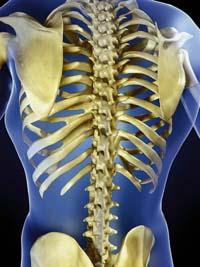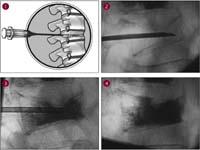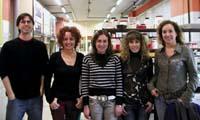New cements to cure vertebral lesions

Viscosity and radiofrequency
The basic formulation of the cements used in bertebroplasty is monomer, PMMA grains and radiopaque agent. The latter allows to observe the mass of the cement during the injection. All these formulations must generally meet two requirements: adequate viscosity and high radiofrequency. The cement must be strong enough to avoid drips and in turn sufficient fluidity to be injected. It should also be visible with x-rays so that the surgeon can see at all times what is being inserted or injected.
To adapt the formulations currently used to new applications, surgeons often transform cements during surgery, always in order to facilitate injection. To do this, on the one hand, they add to the cement a greater number of monomers in liquid phase, in order to reduce the viscosity and increase the work time of the surgeon, and on the other, they add more radioopaque agents to improve the visualization of the cement by means of. However, these modifications affect the characteristics and toxicity of cement. In this regard, researchers from the Department of Polymer Science and Technology of the UPV/EHU are working on the development of new formulations of acrylic bone cement, taking into account that these are mainly injectable cements, to which an additional therapeutic effect is added, if possible.
UPV-EHU researchers have seen the possibility of obtaining injectable acrylic cements of optimal rheological properties by selecting the appropriate grain size of PMMA. This is because the larger these grains are, the more they squander the heat generated in the polymerization reaction and, therefore, less exothermia occurs in this reaction. Thus, the fabric is not so heated.

On the other hand, bioactive elements have been added to acrylic cement. These elements aim to achieve the interaction between cement and biological tissue (bone regeneration). In particular, extrontzio hydroxyapatite has been included to combine the adequate radiofrequency of strontium with the immediate fixation of acrylic cement and the long-term fixation of the bioactive component.
Finally, in collaboration with other research centers, several studies of in vitro or in vivo biocompatibility have been carried out. According to the results of the studies carried out to date, the cements formulated by the researchers of the UPV/EHU do not present greater problems than conventional commercial cements.

Buletina
Bidali zure helbide elektronikoa eta jaso asteroko buletina zure sarrera-ontzian











